How to Start a Street Food Business – The Complete Guide

The UK’s street food industry has exploded in popularity over the past decade, becoming a cornerstone of culinary culture and entrepreneurship. In 2025, this vibrant sector is expected to grow even further, with the market projected to exceed £1.5 billion. This surge is driven by a perfect storm of factors: food lovers craving creative, affordable experiences and entrepreneurs recognising the low barriers to entry, high flexibility, and lucrative earning potential.
Street food is no longer just about feeding hungry passers-by; it’s about crafting unique, memorable dining experiences. From bustling city markets to high-profile festivals, the UK’s street food scene thrives on innovation. Entrepreneurs are seizing this opportunity to showcase bold flavours, global cuisines, and sustainable practices that align with modern consumer values.
Starting a street food business is not just about cooking; it’s about building a brand, creating community connections, and turning passion into profit. Whether you’re dreaming of dishing out loaded fries, fusion tacos, or plant-based delights, there’s never been a better time to dive into this thriving industry.
JUMP TO SECTION
Why Start a Street Food Business?
How Much Does it Cost to Start and Run a Street Food Business?
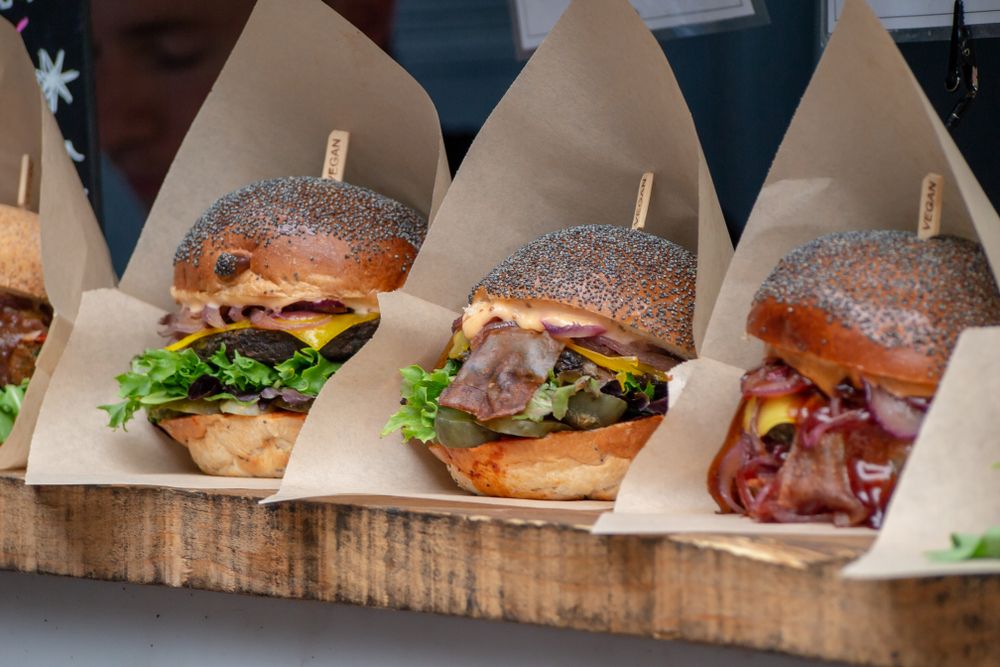
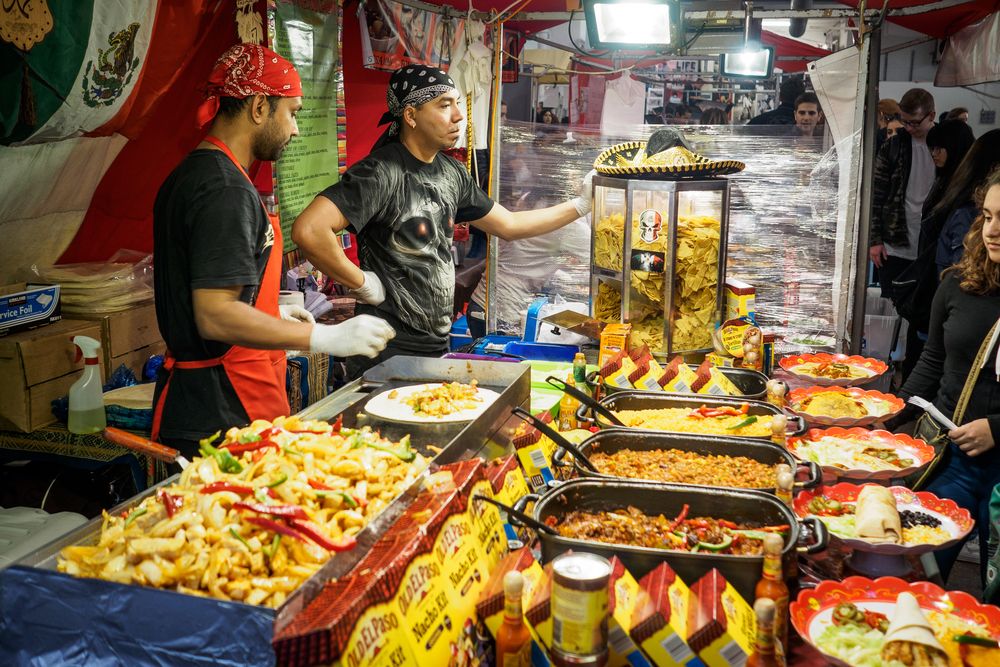
What is Street Food?
Street food refers to ready-to-eat meals and snacks sold by vendors in public spaces, often served from mobile or temporary setups. Its appeal lies in the combination of affordable prices, bold flavours, and a vibrant atmosphere.
While its origins trace back to ancient civilizations, street food has undergone a modern transformation that’s captured the hearts of food enthusiasts and entrepreneurs alike.
In the UK, the resurgence of street food began in the 2010s. The trend shifted from basic food trucks to gourmet offerings inspired by global cuisines. This revival was fuelled by changing consumer preferences, with people seeking diverse and high-quality food experiences outside traditional restaurants.
Town centres have embraced this shift, with food halls and dedicated street food courts popping up to create communal dining spaces. Venues like Boxpark in London and Mackie Mayor in Manchester showcase how urban areas are integrating street food into the fabric of daily life.
Festivals, too, have become hubs for street food innovation, with events such as the British Street Food Awards and dedicated street food festivals drawing huge crowds eager to sample unique dishes.
What sets street food apart today is its fusion of creativity and accessibility. Vendors experiment with everything from fusion tacos to plant-based innovations, making it a playground for culinary creativity. Street food embodies a social and sensory experience, bringing people together over good food in lively settings.
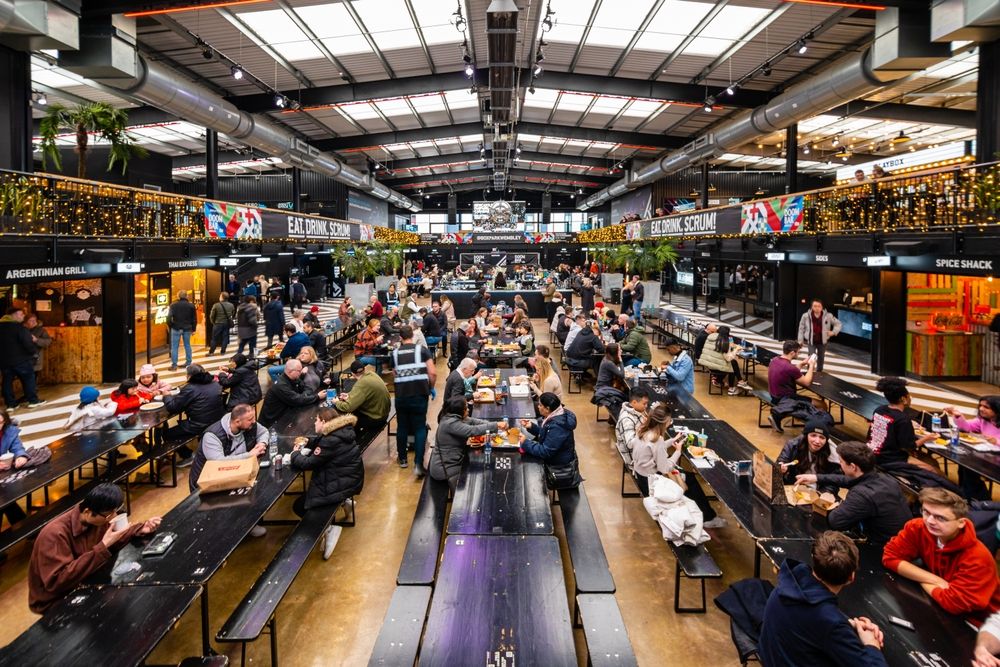
Why Start a Street Food Business?
Starting a street food business is a fantastic opportunity for aspiring entrepreneurs. Here are some key reasons:
Flexibility: Be your own boss and choose your hours, working around your lifestyle or scaling up as your business grows.
Scalability: Start small with a minimal initial investment and expand into larger markets, catering opportunities, or even a permanent location.
Popular Demand: 64% of UK adults now say they would be happy to spend more than their average lunchtime outlay on street food, and the trend shows no signs of slowing down.
The street food industry is also a creative playground for those who love experimenting with bold flavours, unique concepts, and global cuisines. From fusion dishes to eco-friendly menus, the opportunities to stand out are endless.
Who Could Start a Street Food Business?
Street food attracts a diverse range of entrepreneurs. While young, social media-savvy individuals are often at the forefront—building vibrant online followings and creating buzz around their products—this industry is by no means exclusive to one type of person.
Food Enthusiasts: If you’re passionate about cooking and experimenting with flavours, street food is a platform to showcase your creativity.
Career Changers: Many people transition from traditional jobs to pursue their dream of owning a food business. The low start-up costs and flexibility make it an accessible option.
Families and Partnerships: Street food businesses can also be run as family ventures, with everyone playing a role in operations, from cooking to marketing.
In essence, anyone with a love for food and an eye for creating something different can thrive in this industry. Whether you’re a young entrepreneur capturing Instagram trends or a seasoned foodie looking to bring a fresh concept to life, street food offers an exciting path to success.
Starting a street food business is a big step, and having the right roadmap can help. Our free guide gives you a structured breakdown of key considerations to get started the right way. Download it here:
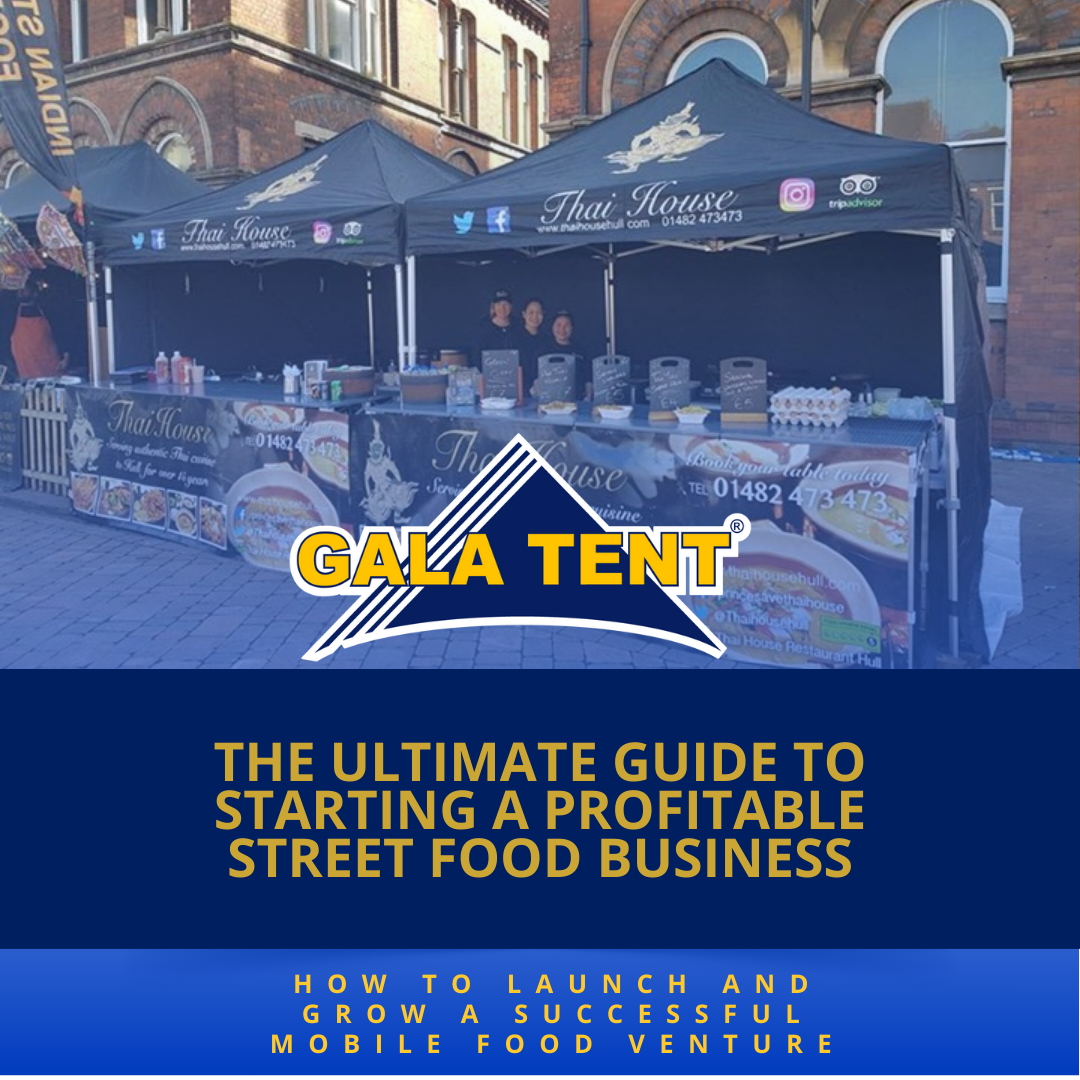
Street Food Trends for 2025
The street food industry is constantly evolving, and staying ahead of emerging trends is key to thriving in 2025. Here are some of the major trends shaping the future of street food:
1. Plant-Based and Sustainable Menus
The demand for plant-based food continues to surge, with more vendors introducing creative vegan options. Consumers are looking for meals that are both delicious and eco-friendly, using fresh, local ingredients and sustainable practices.
Expect to see an increase in vendors offering jackfruit tacos, vegan burgers, and dairy-free desserts that appeal to health-conscious and environmentally aware customers.
2. Global Fusion Dishes
Street food is a celebration of cultural diversity, and 2025 is set to bring even more exciting global mashups. Think Korean BBQ Yorkshire wraps, Mediterranean-Japanese sushi burritos, or Caribbean jerk-loaded fries.
These innovative combinations not only appeal to adventurous eaters but also help vendors carve out unique niches in a competitive market.
3. Tech-Driven Dining Experiences
Technology is transforming the street food industry. Cashless payments and QR code menus are now the norm, but vendors are taking it further with mobile ordering apps and loyalty programs that reward repeat customers.
Tech-savvy vendors are using data to understand customer preferences, tailoring their menus and promotions to maximise engagement.
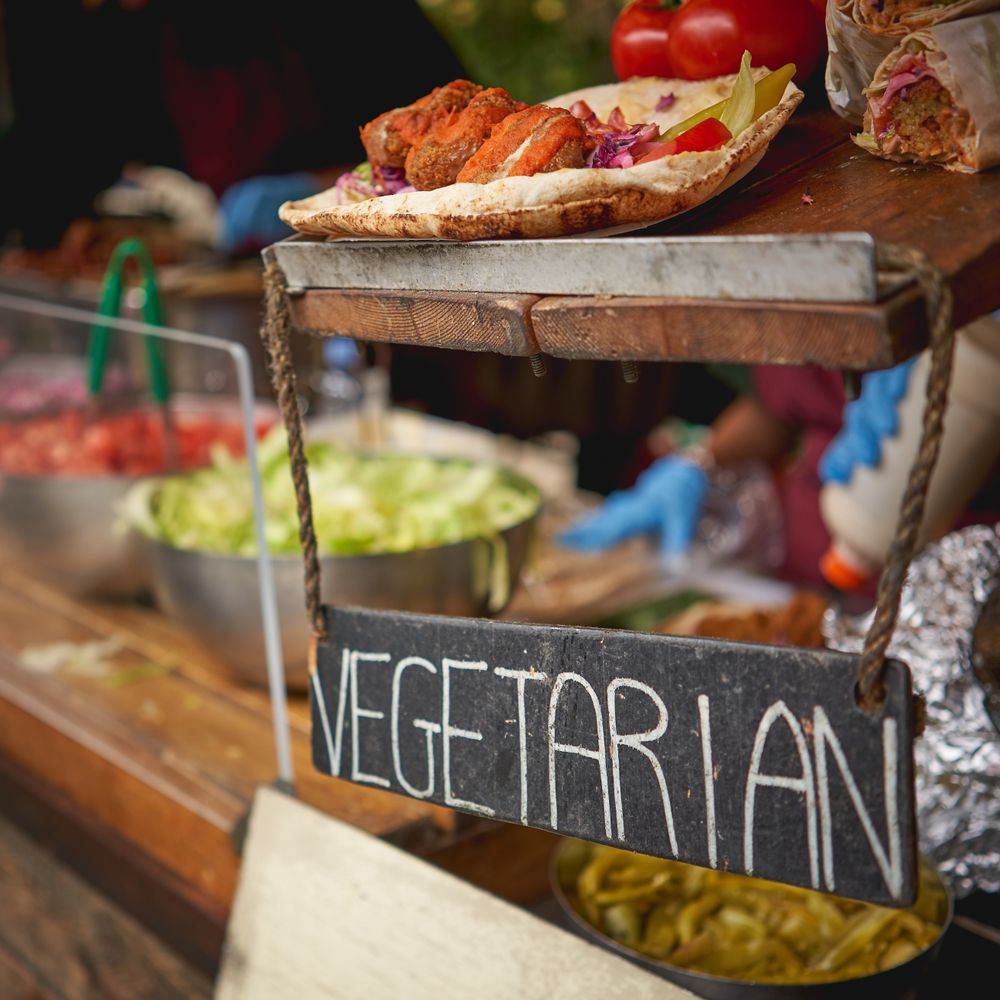
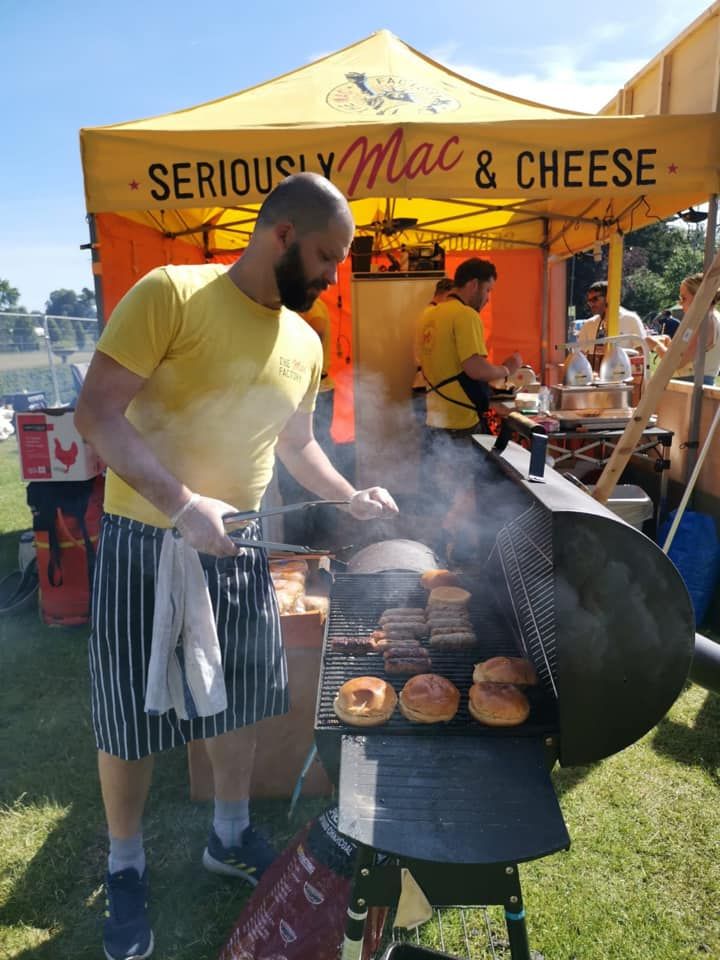
4. Sustainability and Green Practices
As awareness of environmental issues grows, vendors are adopting greener practices. Biodegradable packaging, compostable cutlery, and solar-powered gazebos are becoming standard.
Some traders are even introducing zero-waste menus, using every part of their ingredients to reduce waste and stand out as eco-conscious brands.
5. Street Food Festivals and Themed Markets
Dedicated street food events are gaining momentum, offering vendors opportunities to showcase their menus to larger, more diverse audiences.
Themed markets—like vegan-only festivals or global cuisine weekends—are attracting foodies willing to travel for unique experiences, making these events critical for brand exposure.
6. Comfort Food with a Twist
In uncertain times, comfort food remains a top seller. Vendors are putting fresh spins on classic favourites, such as gourmet grilled cheese sandwiches, loaded mac and cheese bowls, or reimagined British pies.
The focus is on elevating nostalgic dishes with premium ingredients and bold flavours.
How Much Does It Cost to Start a Street Food Business?
Starting a street food business is affordable compared to traditional restaurants, but knowing the full scope of costs is essential for proper planning. Here’s a breakdown of typical expenses:
Licences and Permits: £300–£500. This includes food business registration, street trading licences, and necessary safety certifications.
Equipment: £1,000–£3,000. Items such as cooking equipment, refrigeration, and gazebos are essential investments.
Branding and Marketing: £500–£2,000. This covers custom signage, social media campaigns, and initial design costs.
Stock: £500–£1,500. The cost of your initial food inventory will depend on your menu and portion sizes.
Ongoing Costs
Beyond start-up costs, there are ongoing expenses to account for:
Ingredients and Supplies: Weekly or monthly restocking of fresh ingredients.
Insurance: Public liability insurance and, if applicable, employer liability insurance must be maintained.
Fuel and Energy: Gas for cooking equipment or electricity for lighting and refrigeration.
Staff Wages: If you hire employees, you’ll need to factor in wages, pensions, and National Insurance contributions.
Site Fees: Many markets and festivals charge vendors fees to set up. Daily fees can range from £30 for small markets to upwards of £1,000 for high-profile events.
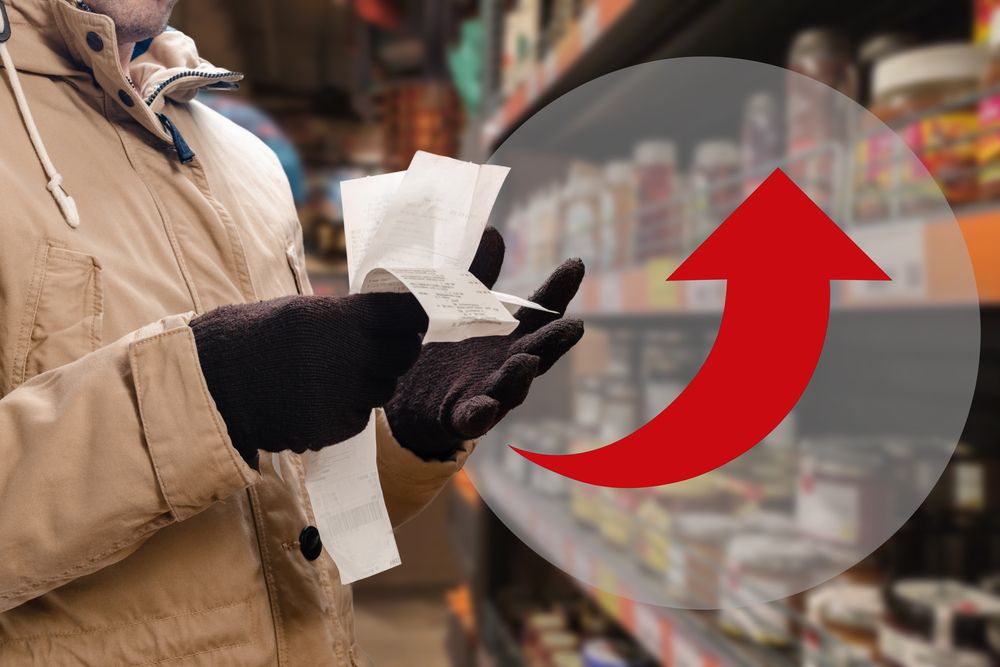
Revenue Sharing and Commissions
In some cases, event organisers or festivals may require a percentage of your revenue instead of a flat fee. This commission typically ranges from 10-25% of your sales. Understanding these terms upfront is crucial for managing your profit margins.
According to the Alliance Online guide, many festivals expect vendors to meet specific presentation standards and comply with sustainability initiatives, which can influence your set-up costs.
Profit Margins
Successful street food businesses report profit margins between 50-70%, but these can vary based on several factors. Vendors who carefully manage costs, optimise pricing, and create high-value menus often achieve the upper end of this range. Here’s what influences your profitability:
Menu Pricing: Offering competitive yet profitable pricing depends on balancing perceived value with your actual ingredient and preparation costs.
Portion Control: Maintaining consistent portion sizes reduces waste and maximises your ingredients’ value. This is particularly critical for high-volume vendors.
Operational Efficiency: Minimising overheads, streamlining workflows, and investing in energy-efficient equipment all contribute to better margins.
Revenue Streams: Vendors who diversify—for example, by catering events or selling branded merchandise—can generate additional income and increase overall profitability.
In conclusion, starting a street food business can be done for as little as £3,000, but achieving sustainable success requires scaling wisely, managing expenses, and adapting to changing customer demands.
With proper planning and strategic investments, street food businesses remain one of the most accessible and lucrative paths for aspiring entrepreneurs.
However, achieving this depends on factors such as menu pricing, portion control, and operational efficiency.
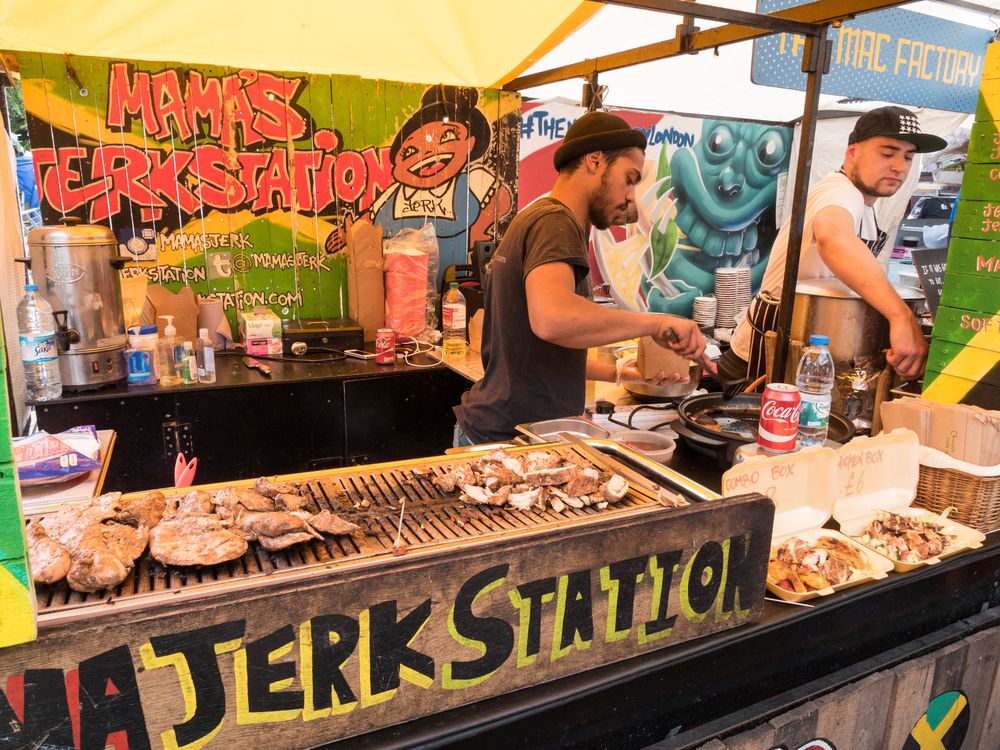
What Licences and Permits Do You Need?
Operating a street food business in the UK requires compliance with several legal requirements to ensure food safety and public health. Here’s what you’ll need:
Food Business Registration: You must register your food business with your local authority at least 28 days before commencing operations. This registration is mandatory for anyone preparing, cooking, storing, handling, distributing, supplying, or selling food. Registration is free and cannot be refused.
Food Safety and Hygiene Certificates: All staff involved in food handling must undergo appropriate food safety training:
Level 2 Food Safety & Hygiene Certificate: Required for individuals handling open foods, ensuring they understand essential food safety practices.
Level 3 Food Safety & Hygiene Certificate: Designed for managers or supervisors overseeing food operations, providing advanced knowledge of food safety management.
We recommend that you spend some time looking into NCASS, which is the Nationwide Caterers Association. They have plenty of resources and tools to help you get completely ready for trading, and offer opportunities to put your business out there to secure jobs.
Street Trading Licence: If you plan to trade on public streets or roadsides, obtaining a street trading licence from the local council is essential. Fees and application processes vary by council, and licences may range from £5 to £30 per day, depending on the location's foot traffic and popularity. Operating without this licence can result in fines.
Public Liability Insurance: This insurance protects you against claims for injury or damage from third parties due to your business activities. While not legally mandated, many councils and event organisers require vendors to have public liability insurance before granting permission to trade.
Food Safety Management System (HACCP): Implementing a Food Safety Management System based on Hazard Analysis and Critical Control Points (HACCP) principles is a legal requirement. This system helps identify and manage food safety risks, ensuring that the food you serve is safe for consumption.
Gas and Electrical Safety Certificates: If your operation uses gas appliances, you must obtain an LPG Gas Safety Certificate from a registered gas engineer to confirm the equipment is safe. Similarly, electrical appliances should undergo Portable Appliance Testing (PAT) to ensure safety standards are met. Brand-new appliances are typically exempt from PAT testing for one year from the purchase date.
Employer Liability Insurance: If you employ staff, even on a casual basis, Employer Liability Insurance is legally required. This insurance covers claims made by employees for work-related injuries or illnesses. The certificate must be displayed at your place of work.
Health and Safety Risk Assessments: Conduct regular health and safety risk assessments to identify potential hazards and implement measures to mitigate risks. If you employ five or more people, you are required to document these assessments and have a written Health & Safety Policy. Additionally, a Fire Risk Assessment is mandatory for businesses with more than five employees.
Adhering to these legal requirements is crucial for the safe and lawful operation of your street food business. Non-compliance can lead to fines, legal action, or closure of your business. Always consult with your local authority to ensure you meet all regional regulations and standards.

Essential Equipment for Your Street Food Business
Every great stall starts with the right gear. Here’s what you’ll need to keep your operation running smoothly:
Getting the right equipment is essential to running a successful street food business. From cooking to serving, your tools need to be durable, efficient, and suitable for outdoor environments. Here’s what you’ll need:
Cooking Equipment: Depending on your menu, you might need grills, fryers, flat tops, woks, or even specialised tools like pizza ovens or smokers. Look for compact, portable options that can handle high-volume service.
Refrigeration: Proper storage is critical for maintaining food safety. Portable fridges or coolers ensure ingredients stay fresh and comply with food safety standards. Choose options with reliable insulation and energy efficiency.
Pop-Up Gazebos: A durable gazebo is your first line of defence against unpredictable weather. Invest in heavy-duty models, like a Pro 50 or Pro 60, to ensure stability and protection for both your equipment and customers. Branded gazebos can also boost your stall’s visibility and professional appeal.
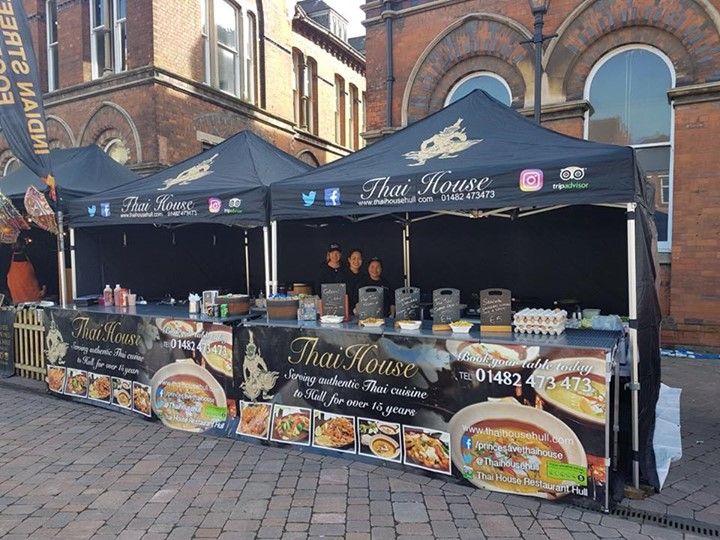

Serving Stations: Tables, counters, or modular setups make food preparation and service smoother. Foldable, lightweight options are ideal for quick assembly and transport.
Lighting and Heating: Evening markets and festivals require adequate lighting. LED strips or battery-operated lights are popular, while portable heaters keep your space comfortable during colder months.
Waste Management: Don’t overlook bins and waste solutions to maintain cleanliness. Some markets require vendors to provide on-site recycling facilities.
Signage and Branding: Eye-catching banners, chalkboards, or digital displays can attract customers and communicate your menu clearly. Flags and banners can also help to enhance your visual representation on your stall. Investing in custom signage that reflects your brand helps your stall stand out.
Point of Sale (POS) System: A reliable cashless payment system, such as card readers or mobile payment apps, ensures you can cater to customers who don’t carry cash. Many vendors now use app-based POS systems with integrated inventory tracking. Alternative solutions include the ultra-secure pay-by-link solutions offered by SOTpay where you can send a payment request SMS and protect your customers' card data.
Portable Water Supply: If your site doesn’t provide access to water, bring a portable water tank with a tap to maintain hygiene standards.



How to Market and Brand Your Street Food Business
Marketing and branding are at the heart of building a successful street food business. In an industry where first impressions count, standing out from the crowd is crucial. Here’s how to make your business shine:
Custom Branding
Your stall is your shopfront, so invest in eye-catching signage, custom-printed gazebos, and menu boards that showcase your personality.
A strong visual identity helps customers remember you and creates a sense of professionalism.
Printed Gazebos: Not only do they protect your setup from the elements, but they also act as a large-scale advertisement for your brand.
Themed Setups: Incorporating design elements that align with your cuisine (e.g., rustic wood for BBQ or bright colours for Caribbean food) can create an immersive experience for customers.
Learn more about how branding can positively impact your business success in our Guide to Branding and Presentation.
Social Media Mastery
Platforms like Instagram and TikTok are perfect for showcasing your culinary creations, building anticipation, and growing a loyal customer base. Share behind-the-scenes content, menu updates, and event announcements to keep followers engaged.
Instagram: Use high-quality photos and videos to highlight your food and setup.
TikTok: Fun, engaging clips of food preparation or customer reactions can go viral.
Hashtags: Tag your posts with relevant local and industry hashtags to expand your reach.
Events and Festivals
Participating in food festivals, local markets, and pop-up events exposes your brand to wider audiences. These gatherings are perfect for testing new menu items and building word-of-mouth buzz.
Local Fairs: A great way to connect with your community.
High-Profile Festivals: Offer visibility on a larger scale but often come with higher fees.
Partnerships and Collaborations
Collaborate with local businesses, breweries, or event organisers to cross-promote your brand. Joint events or paired food-and-drink offerings can attract new audiences.
Digital Presence Beyond Social Media
Create a simple but effective website to act as a home base for your business. Include your story, menu, upcoming events, and contact information. Add an option for customers to book you for private catering gigs or events.


Maximising Profits: Tips for Success
Running a profitable street food business requires strategic thinking and attention to detail. Here are some tried-and-true strategies to maximise your earnings, along with the reasoning behind why they work:
Cross-Sell: Offering complementary items like drinks, snacks, or desserts can increase the average spend per customer. For example, pairing loaded fries with a homemade lemonade not only boosts sales but also enhances the customer experience by offering a complete meal.
Bundle Pricing: Creating meal deals or combo offers encourages customers to spend more while perceiving they’re getting better value. This tactic works particularly well at busy markets or festivals where customers are looking for convenience and affordability.
Loyalty Schemes: Rewarding repeat customers with discounts or freebies builds long-term relationships and keeps them coming back. For instance, offering a free item after a set number of purchases incentivises loyalty and creates a sense of value.
Optimise Portion Sizes: Maintaining consistent and well-calculated portion sizes reduces waste and ensures you’re maximising the yield from your ingredients. This directly impacts your profit margins by controlling costs.
Efficient Staffing: Avoid overstaffing during quiet periods and ensure all team members are cross-trained. Efficient staff allocation reduces labour costs and keeps operations running smoothly, even during busy times.
Upsell High-Margin Items: Highlighting premium menu items or add-ons, such as extra toppings or signature sauces, can increase profitability without significantly raising costs.
Leverage Peak Times: Identifying and maximising busy trading periods, such as lunch hours or evening markets, ensures you’re capitalising on high customer demand. Planning stock and staffing levels around these times helps avoid underperformance.
Reduce Fixed Costs: Negotiate better rates for site fees or explore shared spaces with other vendors to reduce overheads. Reducing fixed costs can make a significant difference in your overall profitability.
By applying these strategies thoughtfully, you can increase your revenue while maintaining strong customer relationships and efficient operations.
Starting a street food business is a big step, and having the right roadmap can help. Our free guide gives you a structured breakdown of key considerations to get started the right way. Download it below.

Street Food Business FAQs
How do I get started with street food in the UK?
Start with a business plan, register your food business with the local authority, and invest in essential equipment like cooking gear and a reliable gazebo. Make sure you comply with food safety regulations and secure the required licences.
How profitable is a street food business?
Profit margins typically range from 50-70%, depending on factors such as menu pricing, portion control, and operational efficiency. Managing costs effectively can make your venture highly lucrative.
Do I need a licence to sell food at markets?
Yes, a street trading licence from your local council is required. You will also need food safety certifications and public liability insurance.
What equipment do I need to start?
Essential items include cooking gear, refrigeration, a durable pop-up gazebo, serving stations, and waste management solutions. You may also need lighting, heating, and a portable water supply.
How much does it cost to start a street food business?
Start-up costs typically range from £3,000 to £10,000, including equipment, licences, branding, and initial stock. Ongoing costs include site fees, ingredients, and insurance.
What are the best locations for a street food stall?
High-footfall areas such as busy markets, festivals, town centres, and office districts are ideal. Conduct research to identify the best spots for your target audience.
How can I make my stall stand out?
Invest in strong branding, such as printed gazebos and signage. Use vibrant visuals on social media to attract customers, and offer unique menu items that differentiate your stall.
Do I need insurance for my street food business?
While not legally required, public liability insurance is often a prerequisite for securing pitches at markets and events. Employer liability insurance is mandatory if you hire staff.
How do I comply with food safety regulations?
Complete a Level 2 Food Hygiene Certificate, implement a Food Safety Management System (HACCP), and regularly inspect your equipment and processes to ensure hygiene standards.
Can I operate year-round?
Yes, with the right setup. Use weather-resistant equipment such as heavy-duty gazebos and invest in portable heating to cater to customers during colder months.
Starting a street food business isn’t just about selling food—it’s about sharing your passion and creating unforgettable experiences. With the right preparation and tools, you’ll be ready to carve out your space in the industry.
 CONTACT US
DOWNLOAD A BROCHURE
REQUEST A PRODUCT DEMO
CONTACT US
DOWNLOAD A BROCHURE
REQUEST A PRODUCT DEMO

 Alexandrea
Alexandrea